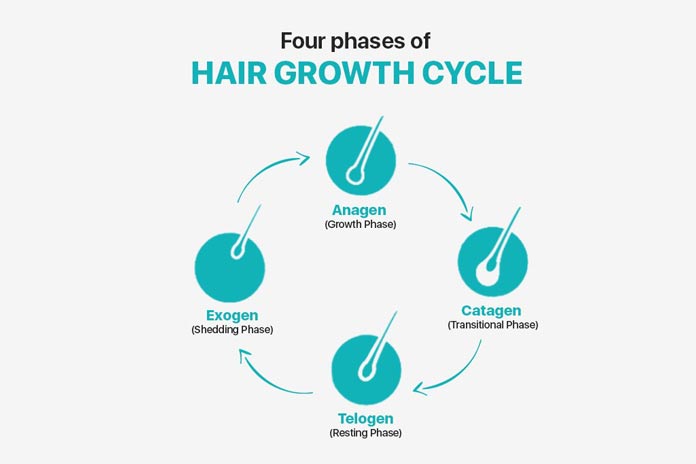Many people consider their appearance of hairs as an important element of their personality. Everyone wants to look perfect, but that never happens due to various reasons. There are different hair conditions like alopecia areata and many other conditions which stops a person’s hair from their perfect look. These conditions obstruct the hair growth, which later results in hair loss from the scalp.
There are many interesting things about our hair. On average, there are around 150000 – 100000 strands of hairs on the scalp. The hair comprises two main components; hair follicle and hair shaft. Hair follicle further divides into two-part, one is a bulb, and the other one is papilla. Papilla carries blood to the hair follicle and nourishes it with nutrients. The hair shaft is the part we see on top of the scalp. Each shaft represents a strand of hair which is made up of hard outer layer called cuticle and a hard protein called keratin.
Each strand gets formed into the hair bulb in a hair follicle. These bulbs never stop working during their lifetime; they always provide nutrients to the hair strand. Each hair grows to the particular amount of time where they get cut, conditioned, shampooed, exposed to the sun and bleached. The process of hair growth in the bulb doesn’t get disturbed by any factors. In the hair growth process, hair follicle takes a rest for a while, and then again, they start forming new hair. The hair follicle exists underneath the skin. Therefore, trimming or shaving will neither affect the arbitrary length of the hair, nor the growth cycle will be affected. Plucking, waxing, or threading might affect the hair growth cycle. It is known as Hair Cycle.
Now let’s get into the phases of hair cycles.

There are four phases in the hair growth cycle. Anagen, Catagen, Telogen, and Exogen.
1. Anagen
It is certainly known as the growing phase of the hair follicle. The average rate of hair follicle growth is 0.5 inches per month. The amount of time a hair will remain in the phase of anagen depends upon person to person. Scientist estimates between four to six years of lifespan for the scalp hairs as compared to body hairs. The body hairs have a shortened anagen phase compared to scalp hairs. The anagen phases particularly depends on the type of hair follicle in men and women. In men and women with androgenic alopecia, the hormone called Dihydrotestosterone shortens the anagen phase and miniaturizes the hair follicle on the scalp. Androgenic hair such as chest hair, beard, or body hairs depends upon the hormone mentioned above to grow in the anagen phase. The anagen phase is shortened due to many other factors like stress and aging.
2. Catagen
Once the anagen phase ends, the catagen phase begins. The period in which the hair detaches from blood vessels and dermal papilla is known as the Catagen phase. The hair growth in this phase can be stopped where blood flow gets detached from the follicle which is in the need of blood oxygen and nutrients to grow the hair. It lasts for approximately 2 weeks and acts as a catalyst for the next phase.
3. Telogen
It is also known as the resting phase where the hair rests for approximately 3 months before getting back to the Anagen phase. Up to 15% of the hairs on the scalp stays in this phase. The hair may shed at any time at the beginning of the telogen to the new anagen phase commences.
4. Exogen
The Exogen phase is an extension of the telogen phase, where the hair sheds and new hair simultaneously starts to grow and begin a new anagen period. Exogen is a shedding process that can be seasonal as well as gender-dependent process. As research indicates, women experience a slightly higher rate of exogen compared to men.
A person can shed up to 50 to 100 hairs per day, and it is unnoticed how someone loses the hair. The process follows its biological clock where the hair growth cycle phases take place. Hair loss in women is most common in the postpartum period and during menopause. Some hair fall can also be caused because of styling products that affect the hair follicle process in itself. Don’t ignore the symptoms of hair fall that might indicate metabolic imbalances, a major illness, a lack of wholesome nutrition, and increased stress.
If your hair loss is chronic & extensive, then consult a Certified Trichologist to determine the cause and any appropriate treatment.
